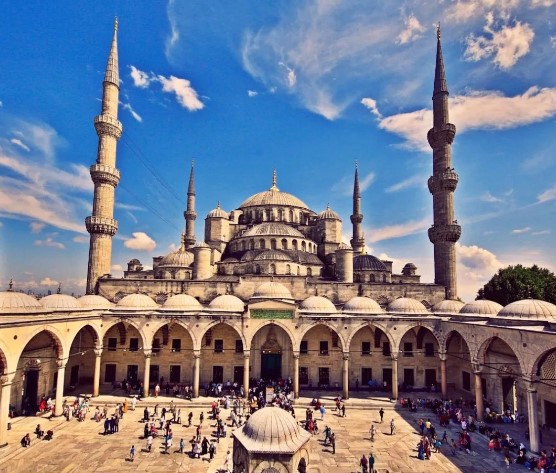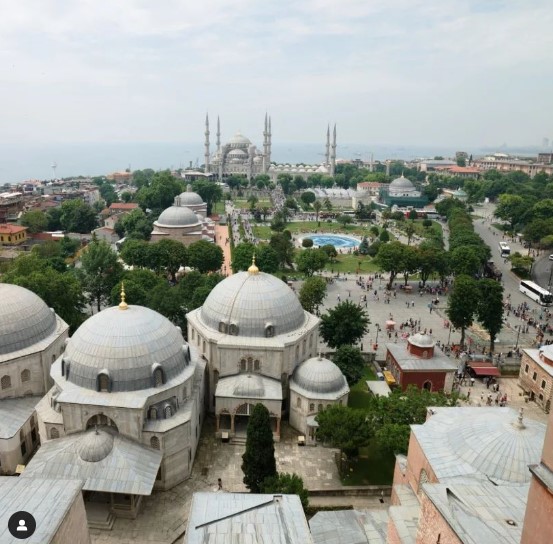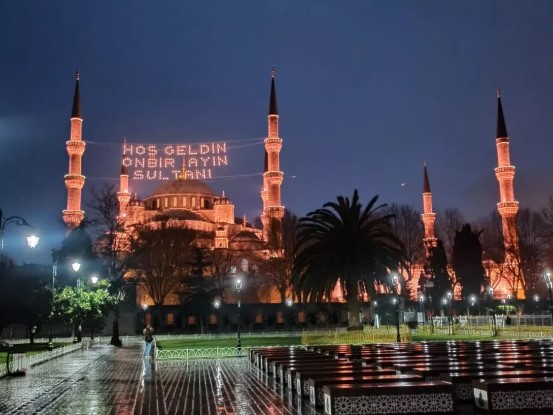The Blue Mosque, also known as the Sultan Ahmed Mosque in Istanbul, Turkey, is popular in the Islamic world. It is renowned for its rare view of the Bosporus and its marvelous structure near the famous Hagia Sophia.

The Hagia Sophia in Istanbul was protected and adorned by the Ottoman Empire with four minarets. In the 17th century, they commissioned the construction of an equally remarkable masterpiece nearby, which is now known as the Sultan Ahmet Mosque, or the Blue Mosque. The mosque was designed by the architect Sedefkar Mehmet Aga on the orders of Sultan Ahmet I. It is regarded as one of the most famous mosques in the world and a must-visit destination in Istanbul.
Tips for Visitors (Open Hours and Entrance Fee)
For tourists who want to see the mosque, 3 different time periods have been set between 08.30-11.30, 13.00-14.30 and 15.30-16.45. On Fridays, the start time of the visit is 13.30. There is no charge for the entrance fee to the Blue Mosque.
Blue Mosque Drone Video
Why Sultan Ahmed Mosque Known Also As Blue Mosque?
The Blue Mosque gets its name from the blue Iznik tiles that adorn its interior, providing a special beauty to the structure. The mosque’s large courtyard and the white minbar are also worth seeing. As you enter the mosque, you notice the beautiful Iznik tiles on the walls, as well as the dome decorations, which are the most beautiful examples of Ottoman culture.
The Sultan Ahmed Mosque, built by Sultan Ahmed I in the 17th century, is located in the Sultanahmet neighbourhood on Horse Square Street. The mosque was designed by Mehmet Aga, the Chief Architect appointed after the death of Sinan, who completed all the works of Ottoman classical architecture before his death in 1588. The location of the mosque was deliberately chosen to be directly opposite Hagia Sophia, likely to make a statement by comparing an Islamic work with a Byzantine work.
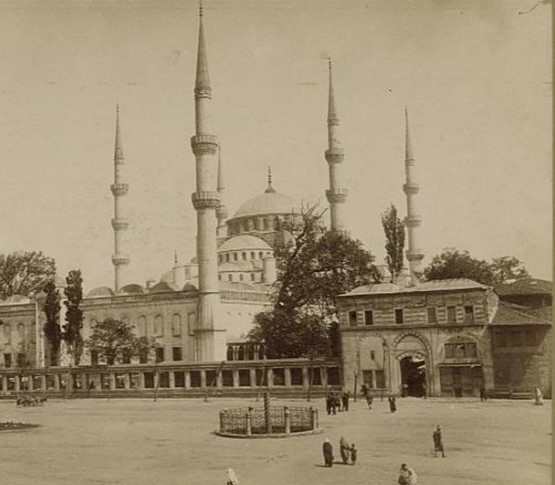
The Sultan gave the architect all the orders for organizing the area where the mosque was to be built. To make room for the mosque, several buildings, including the Mehmet Pasha Palace and Arslanhane, were demolished. The mosque was constructed on the site of former Byzantine buildings. The inscriptions on the façade door and mahfild indicate that the mosque was completed in H.1025/M.1616 and inaugurated by Sultan Ahmed I on this date.
The Sultan Ahmed Mosque comprises two nearly square plans: the courtyard and the harim.
Courtyard:
The mosque sits on a high subbasement, and the architect raised the floor of the mosque above ground level to showcase it from a certain height to the surrounding area. This was likely done to make the building appear taller, as it is located opposite the Hagia Sophia. The planners also took great care in calculating how the mosque would appear to someone standing near Hagia Sophia, presenting a panoramic pramidal silhouette with its harem and courtyard section, and its six minarets anchor the silhouette to the ground.
Harim:
The mosque’s harim has a nearly square plan, measuring 64×72. It comprises a main dome and four half domes, which were later expanded with exedras. The main dome has a diameter of 33.60m and is supported by four round filaya-ğı. The walls surrounding the large cavity of this space are covered in tiles, and the stained glass windows reflect the same colours, creating an atmosphere fitting for a religious building.

Blue Mosque Interior Parts
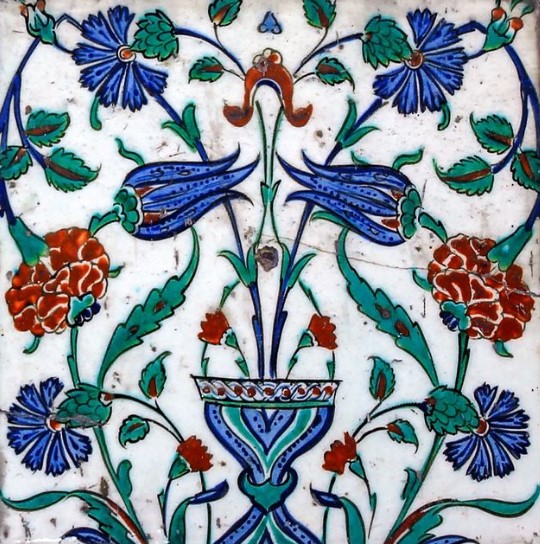


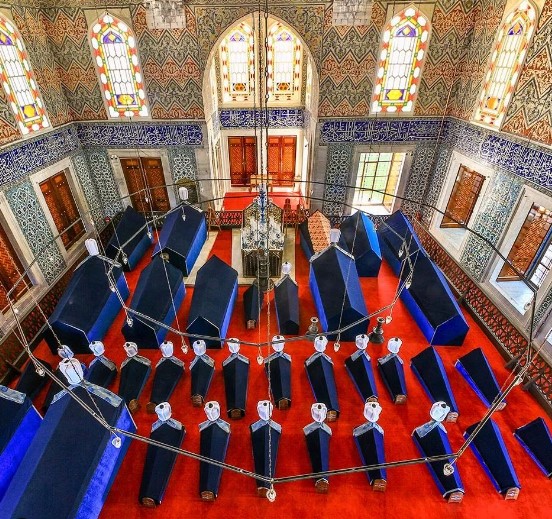
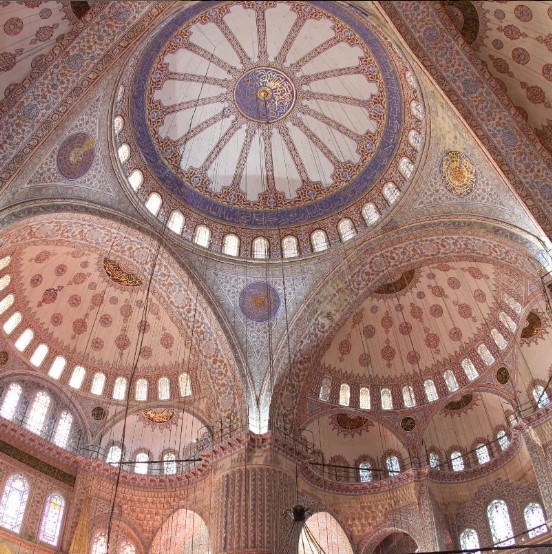
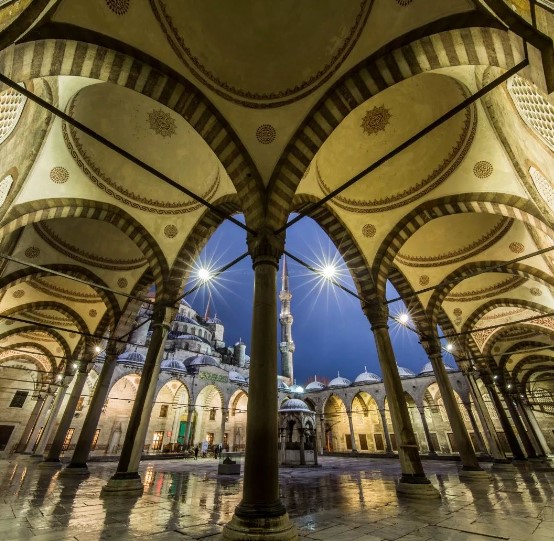



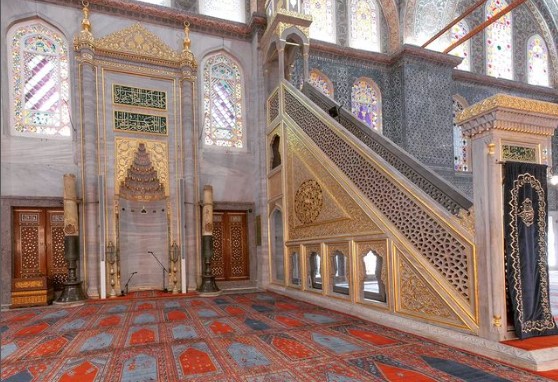

Tile-making originated in the East and continued until the first half of the 16th century. The craft was based on Seljuk tiles with slight modifications. The construction of masterpieces like Süleymaniye in Turkish architecture required an architectural ornamentation that was worthy of it. The mosques of Selimiye, Sokullu, Rüstem Pasha, Piyale Pasha, and Topkapı Palace showcase some of the most exquisite tiles in the world. These tiles are a testament to the art’s unparalleled glaze, color, and pattern.
The Sultan Ahmed Mosque has many tiles, except those in the Topkapı Palace, that surpass all others in variety. In Sultanahmet, 21043 tiles were used, each purchased for 16-18 akçes. The beauty of the Sultanahmet Mosque is enhanced by the cypresses, tulips, hyacinths, pomegranate flowers, rumis, and grape clusters depicted on panels with various colors against a white background. These assets are unique to Turkish tile-making. Tahsin Öz’s examinations reveal over 50 tiles with various patterns, making this an unprecedented treasure for decorative arts.
Blue Mosque Photos


